| 8 April |
• yesterday • tomorrow |
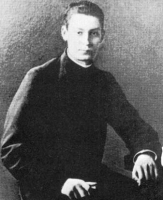
• Prince August Franciszek Maria Anna Józef Kajetan Czartoryski
• Duke of Vista Alegre
Oldest child of Prince Ladislaus and Princess Maria Amparo, daughter of the Queen of Spain; the couple had settled in Paris, France after being losing all their property and being exiled in the 1830 revolution. Both Augustus and his mother contracted tuberculosis; she died when he was six years old, and he was sent to doctors in Switzerland, Italy, Spain and Egypt in a vain search for a cure. Though he was forced to attend court functions and amusements as the son of a prince, the boy had no interest in worldly life, and early felt a call to religious vocation. He studied in Paris and in Krakow, Poland, but school was often interrupted due to his poor health; one of his tutors was Saint Jozef Kalinowski.
The turning point in the young man’s life came in May 1883 when he met Saint John Bosco. Don Bosco celebrated Mass in the family chapel of Lambert Palace in Paris, and Augustus served as a 25 year old altar boy. After making all needed arrangements to turn his rights, privileges and inheritance as the first-born to his brothers, Augustus joined the Salesian Congregation in June 1887; Don Bosco was reluctant as he did not think Augustus’s health could withstand the life of a novice and seminarian, but Pope Leo XIII intervened and convinced him. Augustus studied in Turin, Italy, received his cassock on 24 November 1887, and in early 1888 made his Salesian vows at the grave of Don Bosco. After studying in Liguria, Italy, where he became close friends with Venerable Andrea Beltrami, he was ordained a priest at Sanremo, diocese of Ventimiglia, Italy on 2 April 1892 by Blessed Tommaso Reggio. He served as a parish priest in Alassio, Savona, in the diocese of Albenga, Italy for about a year before the tuberculosis did him in.
2 August 1858 in Paris, France
• evening of 8 April, 1893 in Alassio, Savona, Italy of tuberculosis
• interred in in the family mausoleum in the parish crypt in Sieniawa, Poland
• re-interred in the Salesian church in Przemysl, Poland
25 April 2004 in Pope John Paul II in Rome, Italy
https://catholicsaints.info/blessed-augustus-czartoryski/
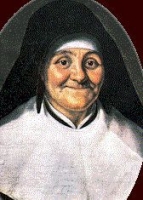
• Julia of Billiart
• Julie Billart
• Mary Rose Julia Billiart
Sixth of seven children of peasant farmers Jean-François Billiart and Marie-Louise-Antoinette Debraine. She was poorly educated, but knew her catechism by heart at age 7, and used to explain it to other children. At age 14 she took a private vow of chastity, and gave her life to serving and teaching the poor. At age 22, she was sitting next to her father when some one shot at him; the shock left her partially crippled for 22 years. During the French Revoluation, a group of her friends helped organize the work she'd started. Julia was miraculously healed of her paralysis on 1 June 1804, and resumed her work. Her organization became the Congregation of the Sisters of Notre Dame (Institute of Notre Dame; Sisters of Notre Dame), dedicated to the Christian education of girls, formally established in Amiens, France, the first vows being made by Saint Julia and two others on 15 October 1804. By the time of her death the Institute had 15 convents.
12 July 1751 at Cuvilly, diocese of Beauvais, department of Oise, Picardy, France as Mary Rose Julia Billiart
• 8 April 1816 at the Institute's motherhouse at Namur, Belgium of natural causes
• died while praying
22 June 1969 by Pope Paul VI
• against poverty
• against bodily ills or sickness
• sick people
I ought to die of shame to think I have not already died of gratitude to my good God. - Saint Julie Billiart
Do what you can and don't waste time lamenting over what you can't do. - Saint Julie Billiart
https://catholicsaints.info/saint-julia-billiart/
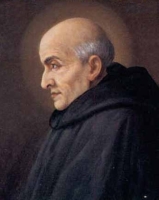
19 May (Augustinians)
Priest. Joined the Congregation of Hermits of Brettino, which in 1256 merged with the Augustinian Hermits. Chosen the Augustinian Provincial Prior of the Marches of Ancona, Italy in 1269. Chosen the third Augustinian Prior General on Pentecost Sunday 1271, and served till 1274, visiting houses throughout Italy and France, and participating in the Second Council of Lyons in 1274. Unanimously chosen Augustinian Prior General in 1284, and served in that position the rest of his life. He worked tireless for years with Blessed Augustine of Tarano to revise the constitutions of the Order, implementing them in 1290; they stood for centuries before a new revision was needed. As a leader, he insisted on proper observance of the Augustinian Rule, and worked to found Augustinian houses for women. He encouraged his brother friars to become educated, improved the training of Augustinian novices, founded five Augustinian schools, and supported the creation of libraries. He had a deep devotion to the Blessed Virgin Mary, and passed some of that along to the tradition of the Augustinians. Miracle worker.
1235 in Osimo or San Elpidio (sources vary), Italy
• 8 April 1291 in Orvieto, Tuscany, Italy of natural causes
• buried at the Augustinian house in Orvieto; by order of Pope Nicholas IV, the burial was delayed to allow all the flocks of mourners to pay their respects
• some relics later sent to Osimo, Italy
• some relics later sent to San Elpidio, Italy
• all relics gathered and re-interred in the Saint Augustine church in Rome, Italy in the early 18th century
• re-interred in the chapel in the Augustinian General Headquarters in Rome on 4 May 1970
1761 by Pope Clement XIII (cultus confirmation)
https://catholicsaints.info/blessed-clement-of-osimo/
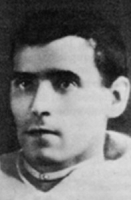
• Dominikus Zubero
• Domenico Iturrate of the Most Blessed Sacrament
• Domingo of the Blessed Sacrament
Devoted to the Blessed Virgin Mary at an early age. Trinitarian priest, taking the name Domenico Iturrate of the Most Blessed Sacrament.
11 May 1901 in Dima, Vizcaya, in the Basque region of Spain
• 8 April 1927 in Belmonte, Spain of tuberculosis
• interred in the Trinitarian church of Algorta, Vizacay, Spain
30 October 1983 by Pope John Paul II
Our obedience to God's Will must be total, without reserve, and constant. - Blessed Dominic, 1922
The faithful fulfillment of God's Will is an aim which in him reached very lofty heights, especially during the last years of his life. As a Trinitarian religious, he strove to live according to two central principles of the spirituality of his Order: the mystery of the Holy Trinity and the work of the Redemption, which led to a life of intense charity. - Pope John Paul II
https://catholicsaints.info/blessed-domingo-iturrate-zubero/
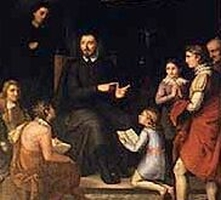
Julian Martinet
Tailor's apprentice in youth. Briefly admitted to the Franciscan monastery at Medinaceli, Spain, but was dismissed as not suited for monastic life. Tailor at Santocraz, Spain. Briefly admitted as a lay brother to the Franciscan monastery of Our Lady of Salceda, but dismissed as mentally unstable, and not suited for monastic life. He then lived as a hermit; his reputation for holiness began to grow, and he returned to the monastery of Our Lady of Salceda. Accompanied Franciscan missionaries, ringing a bell in the streets to call people to services. Became a noted preacher in his own right, and known to his brothers for his austerities.
c.1550 at Medinaceli, diocese of Segovia, Castile, Spain
8 April 1606 at Saint Didacus Friary, Alcalá de Henares, Spain
1825 by Pope Leo XII (cultus confirmation)
https://catholicsaints.info/blessed-julian-of-saint-augustine/
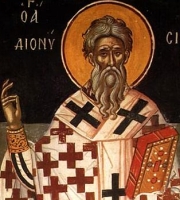
Dionysius the Great
He studied under Origen, and eventually became the head of the catechetical school of Alexandria, Egypt. Archbishop of Alexandria. In 250 during the persecutions of Decius, Dionysius tried to flee the city, but was caught and imprisoned. He was rescued by Christians and hid in the Libyan desert until 251. During the Novatian schism, Dionysius supported Pope Cornelius, and helped unify the East. Exiled during the persecution of Valerian in 257 to the desert of Mareotis; he returned to Alexandria when toleration was decreed by Gallienus in 260. Dionysius dealt leniently with the Christians who had lapsed during the persecutions. He wrote a noted commentary on Revelations. Greek Father of the Church.
c.190 in Alexandria, Egypt
265 of natural causes
https://catholicsaints.info/saint-dionysius-of-alexandria/

Agabos
8 March (Greek calendar)
Jewish convert. One of the 72 disciples sent out by Jesus to preach. Had the gift of prophecy, and predicted an empire-wide famine that occurred in 49. Probably the one who predicted Paul's imprisonment in Jerusalem in Acts 21:10.
in Antioch
in 1st century Antioch
• Carmelite holding a church
• making a prophesy
• with a dove
At that time some prophets came down from Jerusalem to Antioch, and one of them named Agabus stood up and predicted by the Spirit that there would be a severe famine all over the world, and it happened under Claudius. So the disciples determined that, according to ability, each should send relief to the brothers who lived in Judea. - Acts 28:27-29
https://catholicsaints.info/saint-agabus-the-prophet/
Born to the nobility, the daughter of Lord Armerico of Barbania, and descended from the dukes of Lombardy. Feeling a call to religious life, Libania fled home from an arranged marriage at age 15, seeking shelter at the abbey of San Benigno Futtuaria where she became a Benedictine nun, receiving the habit from Saint William. Her father built the monastery of Saint Thomas for her and some sister Benedictines in Busano, Italy, and Libania served as its first abbess.
Barbania, Italy
• 8 April 1064 in church at the monastery of Saint Thomas in Busano, Turin, Italy of natural causes
• legend says that the night she died, an angel appeared in her cell and led her to the church for her passing
• buried in a hidden location in the church of to prevent destruction of her relics
https://catholicsaints.info/blessed-libania-of-busano/

Amanzio di Como
Member of the imperial Roman court. Third bishop of Como, Italy. Built the Basilica of Sant'Abbondio in Como.
Canterbury, England
• 8 April 448 in Como, Italy of natural causes
• interred at the Basilica of Sant'Abbondio in Como
• relics transferred to the Chiesa del Gesu, Como on 2 July 1590
• relics currently in the Church of San Fedele, Como
https://catholicsaints.info/saint-amantius-of-como/
Flegon
First century bishop of Hyrcania, Greece. May have been one of the "70 Disciples of Christ". Martyr. Mentioned by Saint Paul the Apostle in the Epistle to the Romans.
Greet Asyncritus, Phlegon, Hermes, Patrobas, Hermas, and the brothers who are with them. - Epistle to the Romans, 16:14
https://catholicsaints.info/saint-phlegon-of-hyrcania/
• Herodian of Patras
• Rhodion of Patras
First century bishop of Patras, Greece. He may have been one of the "70 Disciples of Jesus". Martyr. Saint Paul the Apostle refers to Herodion as "my brother" or "my kinsman".
Greet Herodion, my kinsman. - Paul's Epistle to the Romans, 16:11
https://catholicsaints.info/saint-herodion-of-patras/
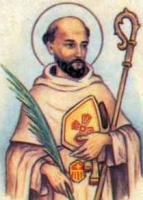
Mercedarian friar. Bishop of Granada, Spain. Participated in the Council of Florence in 1450. On his way home from that council, he was captured, imprisoned, beaten, tortured and finally executed for his Christianity. Martyr.
beheaded c.1450
https://catholicsaints.info/blessed-gonzalo-mercador/
First century bishop of Marathon, Greece. May have been one of the "70 Disciples of Christ". Martyr. Mentioned by Saint Paul the Apostle in the Epistle to the Romans.
Greet Asyncritus, Phlegon, Hermes, Patrobas, Hermas, and the brothers who are with them. - Epistle to the Romans, 16:14
https://catholicsaints.info/saint-asyncritus-of-marathon/
Denis
Second century bishop of Corinth, Greece. Some of his correspondence, including testimony about the martyrdom of Saint Peter and Saint Paul, and correspondence with popes of the era, have survived. Fought the Marcionites and other heresies of his time.
https://catholicsaints.info/saint-dionysius-of-corinth/
Beate, Beatrix
Born to the nobility, the daughter of Duke Heinrich of Mecklenburg. Poor Clare nun at the convent in Ribnitz, Germany. Abbess of the house in 1350.
14th century Mecklenburg, Germany
8 April 1399 in Ribnitz, Germany
https://catholicsaints.info/saint-beata-of-ribnitz/
Bishop of Ferentini, Italy.
586
https://catholicsaints.info/saint-redemptus-of-ferentini/
Martyr venerated in Carthage, North Africa.
https://catholicsaints.info/saint-concessa/
A group of African martyrs whose name appears on ancient lists, but about whom nothing is known but their names - Januarius, Macaria and Maxima.
https://catholicsaints.info/martyrs-of-africa-8-april/
A group of Christians martyred together for their faith. We know little more than their names - Diogene, Macario, Massimo and Timothy.
Antioch, Syria
https://catholicsaints.info/martyrs-of-antioch-8-april/
20 September as one of the Martyrs of Korea
A group laymen who were martyred together in the apostolic vicariate of Korea.
• Augustinus Jeong Yak-jong
• Franciscus Xaverius Hong Gyo-man
• Ioannes Choe Chang-hyeon
• Lucas Hong Nak-min
• Thomas Choe Pil-gong
8 April 1801 at the Small West Gate, Seoul, South Korea
15 August 2014 by Pope Francis
https://catholicsaints.info/martyrs-of-seoul-8-april/
• Cennfaoladh of Bangor
• Hamazasp
• Isaac
• Martin of Pegli
CatholicSaints.Info Portable Edition